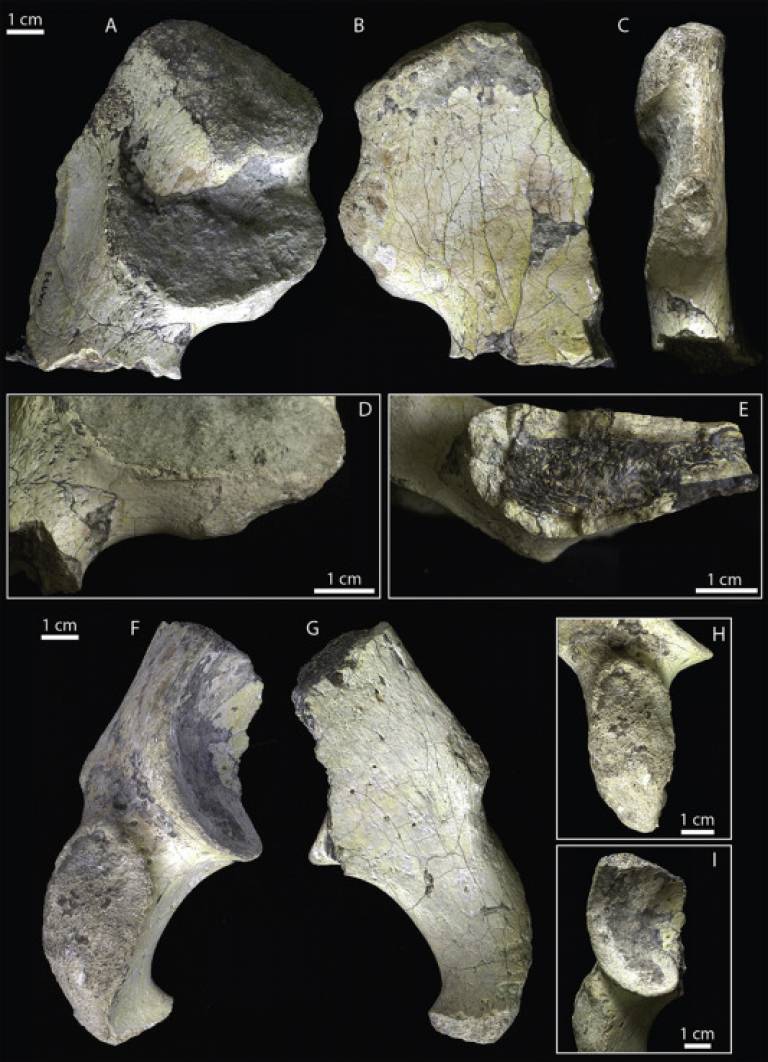A partial Homo pelvis from the Early Pleistocene of Eritrea
12 November 2018
Here we analyze 1.
 07-0.99 million-year-old pelvic remains UA 173/405 from Buia, Eritrea. Based on size metrics, UA 173/405 is likely associated with an already described pubic symphysis (UA 466) found nearby. The morphology of UA 173/405 was quantitatively characterized using three-dimensional landmark-based morphometrics and linear data. The Buia specimen falls within the range of variation of modern humans for all metrics investigated, making it unlikely that the shared last common ancestor of Late Pleistocene Homo species would have had an australopith-like pelvis. The discovery of UA 173/405 adds to the increasing number of fossils suggesting that the postcranial morphology of Homo erectus s.l. was variable and, in some cases, nearly indistinguishable from modern human morphology. This Eritrean fossil demonstrates that modern human-like pelvic morphology may have had origins in the Early Pleistocene, potentially within later African H. erectus.
07-0.99 million-year-old pelvic remains UA 173/405 from Buia, Eritrea. Based on size metrics, UA 173/405 is likely associated with an already described pubic symphysis (UA 466) found nearby. The morphology of UA 173/405 was quantitatively characterized using three-dimensional landmark-based morphometrics and linear data. The Buia specimen falls within the range of variation of modern humans for all metrics investigated, making it unlikely that the shared last common ancestor of Late Pleistocene Homo species would have had an australopith-like pelvis. The discovery of UA 173/405 adds to the increasing number of fossils suggesting that the postcranial morphology of Homo erectus s.l. was variable and, in some cases, nearly indistinguishable from modern human morphology. This Eritrean fossil demonstrates that modern human-like pelvic morphology may have had origins in the Early Pleistocene, potentially within later African H. erectus.
A partial Homo pelvis from the Early Pleistocene of Eritrea
Ashley S. Hammond, Sergio Almécija, Yosief Libsekal, Lorenzo Rooke, Roberto Macchiarelli
DOI: 10.1016/j.jhevol.2018.06.010
 Close
Close

